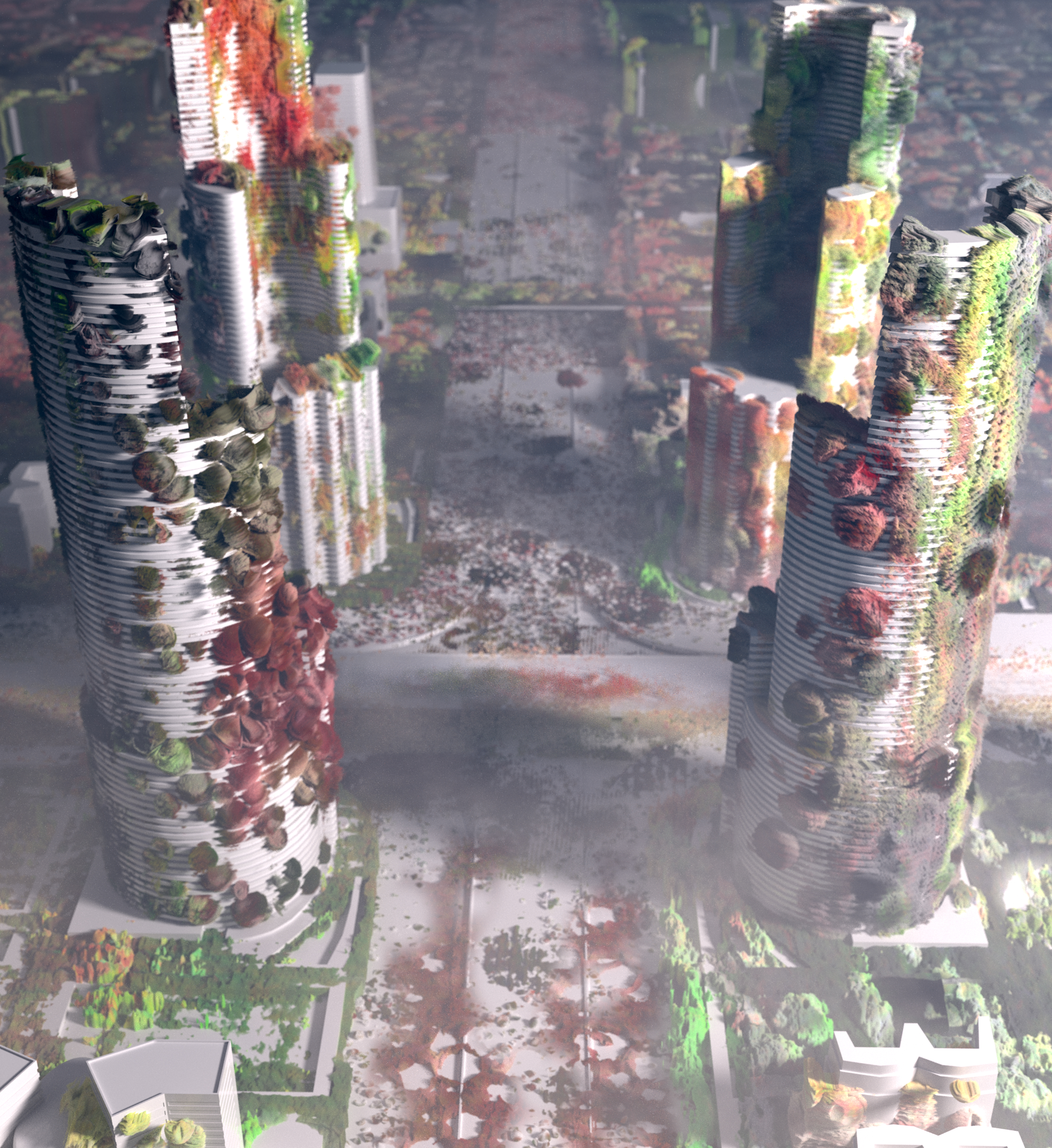
The Futurama series examines future visions from the past that have shaped our present conditions. One such vision, the 1939 GM Futurama, was an integral part of selling the public on the U.S. highway system and the automobile as a mode of transportation. Consequently, this vision also cemented reliance on oil. The Futurama showed the public what life would be like with a car in every garage, suburbs, and modern city planning (consider Houston, TX). Its builders were working to give a glimpse of the world of 1950. In form, it was a warehouse sized scale model that moved the viewer on a conveyor belt through a miniature world.
While painting a beautiful and engaging picture for the public, the Futurama predicted much more than what it intended. Built into this model were some strangely accurate faults. The lights were too hot and caused the glue that held the trees in place to soften. The trees would then fall over: deforestation caused by a greenhouse effect. The rivers, made of sheet glass, would become dusty and required regular cleaning. So this model predicted pollution in our waterways. Finally, the cars themselves, chain driven, would become fouled and jam up the mechanism causing traffic and multi-car pile ups. It all sounds somewhat familiar.
The Mouldering Futurama presents a famous view from the original ride in decay and laden with mold. It imagines the model laying fallow for years, no maintenance or repairs. A state of decay with new life gripping to its surface. A model that is in desperate need of change.

